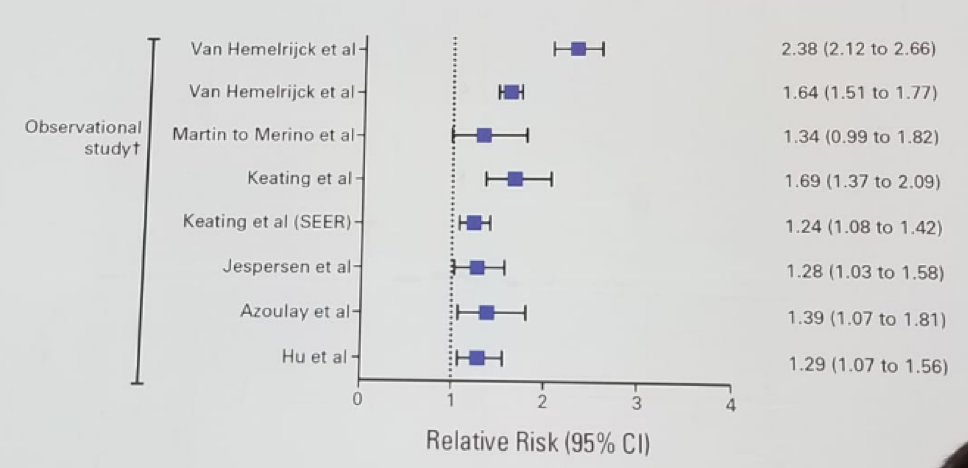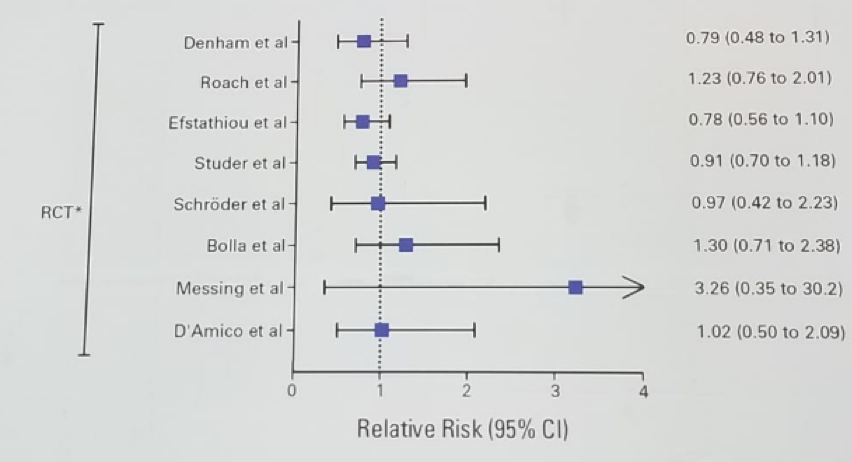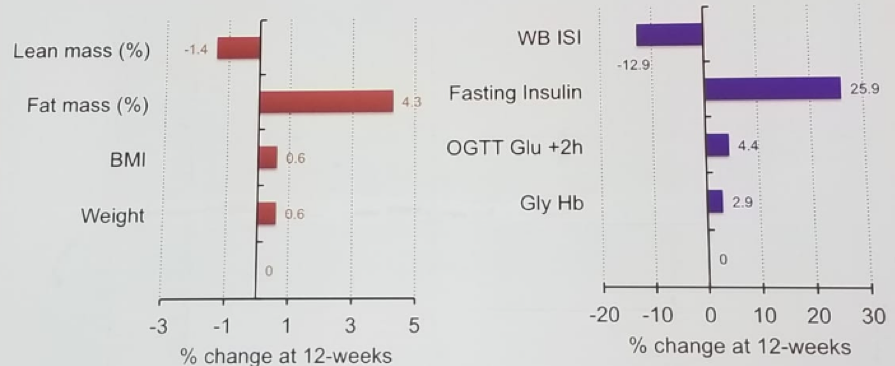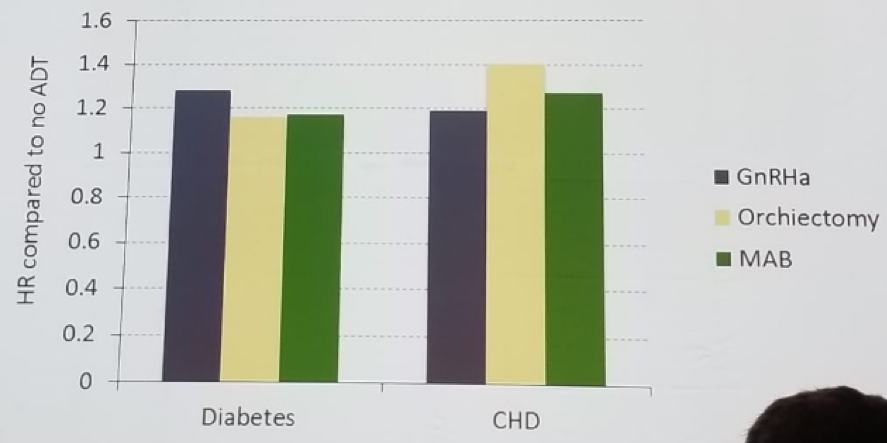Figure 1 – Observational studies showing an increased risk of CVD among men treated with LHRH agonists:

Figure 2 – Randomized trials assessing the effect of of LHRH agonists on CVD risk:

Plaque instability is at the heart of cardiovascular disease (Figure 1). Most acute CVD events are caused by the rupture of a vulnerable atherosclerotic plaque. ADT causes instability and promotes plaque rupture.
ADT is also known to promote sarcopenia and increase body fat mass and rate of dyslipidemia.1 In a prospective 12-week study, 25 men with locally advanced or recurrent PC, who were treated with LHRH agonists were monitored.1 Lean body mass decreased and fat mass increased significantly, and fasting insulin levels rose as well (Figure 3). There was also an increase in the level of triglycerides, LDL, HDL, and total cholesterol. Furthermore, an association between ADT and diabetes, coronary artery disease, myocardial infarction, sudden death, and stroke, was shown in an observational study of 37443 patients, of which 39% were treated with ADT2 (Figure 4). Even the American Heart Association states that ADT has a proven impact on standard CV risk factor, CV events, and CV death. 3 In 2010, the FDA issued a statement to the drug companies producing GnRH agonists on the need to add new safety information warning about an increased risk of diabetes and certain CVD.
Figure 3 – Sarcopenic obesity:

Figure 4 - Association between ADT, diabetes and congestive heart disease:

References:
1. Smith et al. J Clin Endocrinol Metab 91 (4): 1305-1308, 2006
2. Keating NL et al. JNCI 2010 102 (1): 39-46
3. Levine et al. Circulation 2010; 121; 833-840
Presented by: Bertrand Tombal, MD, Brussels, Belgium
Written by: Hanan Goldberg, MD, Urologic Oncology Fellow (SUO), University of Toronto, Princess Margaret Cancer Centre @GoldbergHanan at the 2018 FOIU 4th Friends of Israel Urological Symposium, July 3-5. 2018, Tel-Aviv, Israel


